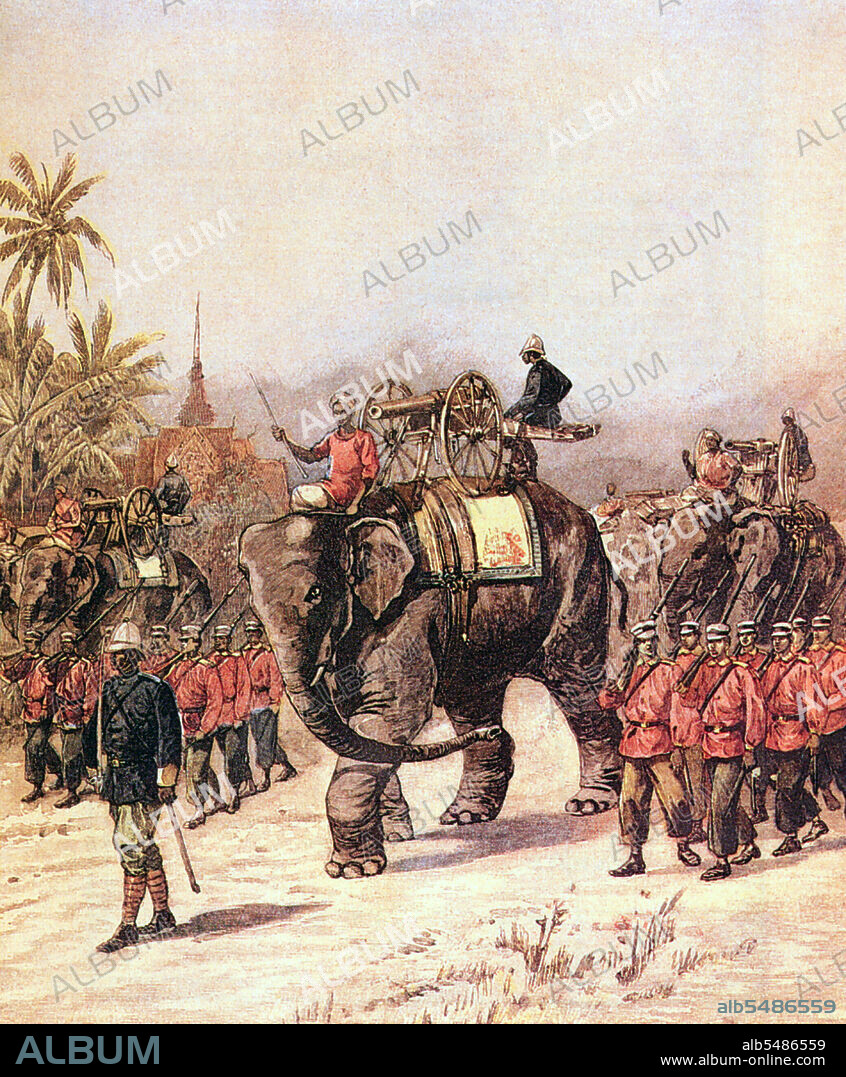alb5486559
Siamese troops with artillery on elephant back advance into Laos to combat Chinese invasions and French expansion.

|
Add to another lightbox |
|
Add to another lightbox |



Buy this image.
Select the use:

Title:
Siamese troops with artillery on elephant back advance into Laos to combat Chinese invasions and French expansion.
Caption:
The Franco-Siamese War of 1893 started when French Indochina's Governor-General Jean de Lanessan sent Auguste Pavie as consul to Bangkok to bring Laos under French rule. The government in Bangkok, mistakenly believing that they would be supported by the British government, refused to concede territory east of the Mekong and instead reinforced their military and administrative presence. In July, the French sent two of their gunships up the Chao Phraya River into Bangkok. They came under fire but forced their way through. With guns trained on the Grand Palace in Bangkok, the French delivered an ultimatum to the Siamese on July 20 which included handing over Laos. When Siam, which was ruled by King Chulalongkorn, did not immediately comply unconditionally to the ultimatum, the French blockaded the Siamese coast. In the end the Siamese submitted fully to the French conditions, finding no support from the British. In addition, the French demanded as guarantees the temporary occupation of Chantaburi and the demilitarisation of Battambang, Siemreap (Siem Reap) and the western bank of the Mekong. Both parties signed the Franco-Siamese Treaty on 3 October 1893, in which the Siamese agreed to cede Laos to France, an act that led to the significant expansion of French Indochina. In 1896, France signed a treaty with Britain that defined the border between Laos and the British territory in Upper Burma.
Credit:
Album / Pictures From History/Universal Images Group
Releases:
Model: No - Property: No
Rights questions?
Rights questions?
Image size:
3755 x 4543 px | 48.8 MB
Print size:
31.8 x 38.5 cm | 12.5 x 15.1 in (300 dpi)
 Pinterest
Pinterest Twitter
Twitter Facebook
Facebook Copy link
Copy link Email
Email
